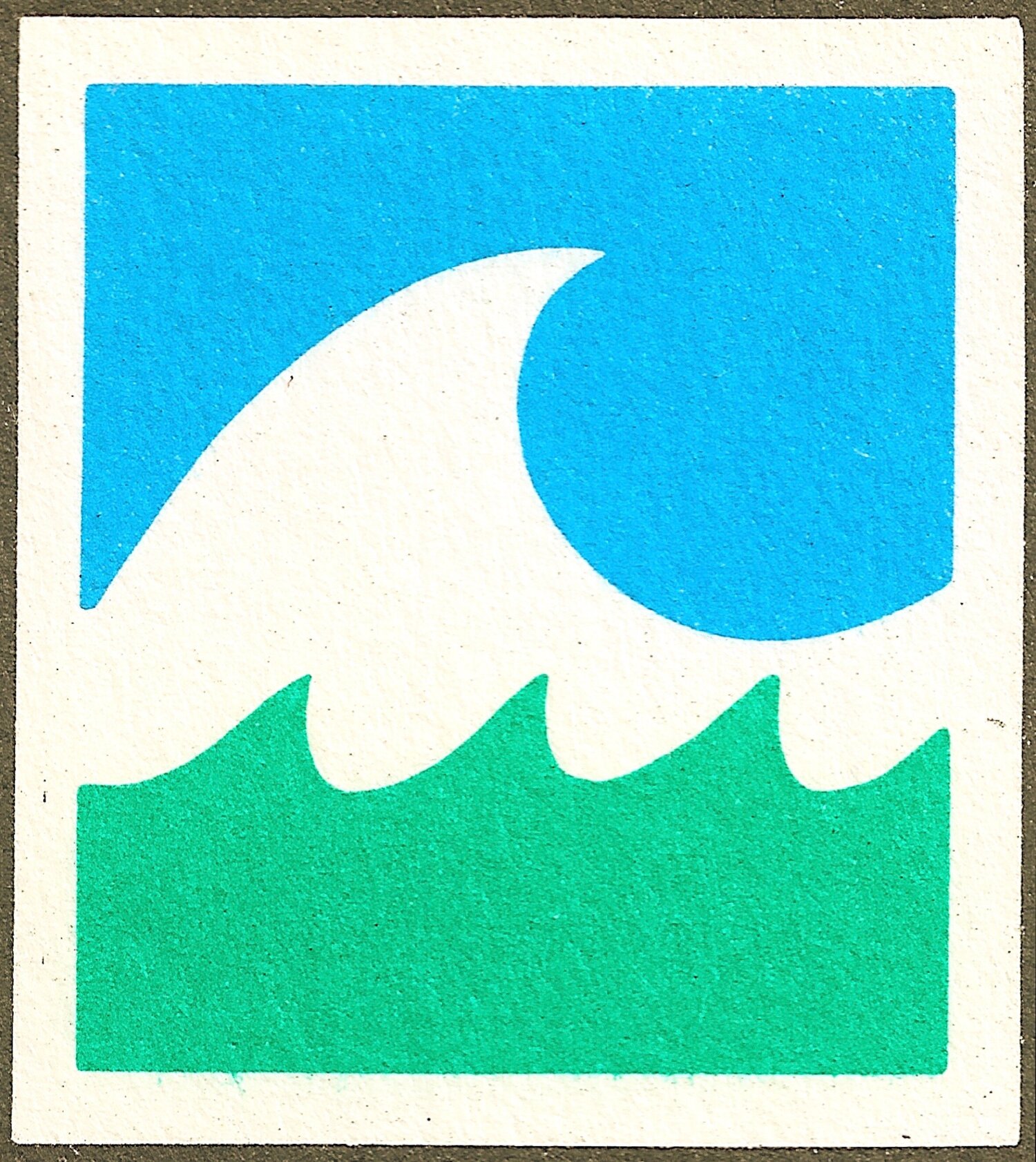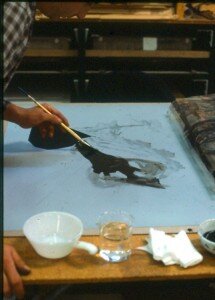Lithography
Lithography is based on the principle that OIL AND WATER DO NOT MIX. Although the principle of lithography is simple and the drawing techniques autographic, the technical processes involved are complex and variable. For this reason, artists wishing to make lithos have worked in collaboration with Master Printers since the early years of the nineteenth century.
Artist David Amico
In making a lithograph, the artist uses specially formulated GREASY DRAWING MATERIALS to make an image on stone, and this surface is then CHEMICALLY TREATED so that only the drawn areas will accept the printing ink. The solution used for this “stabilizing” process is called an ETCH, but its sole function is to chemically separate the image from the undrawn ares on the surface of the stone.
A number of PRINTING ELEMENTS may be used in lithography, among them ALUMINUM AND ZINC PLATES, ONYX, MARBLE, AND SEVERAL TYPES OF LIMESTONE. By far the best is the grey limestone that comes from the Solnhafen quarry in Bavaria. The superiority of this stone is due to its fine, uniform molecular structure which leads to a stable and consistent reaction to the processes of drawing, etching, and printing. The world’s supply of grey Bavarian limestone is nearly exhausted. This and the fragility of the stones makes them very expensive and highly prized. The drawing surface they afford the artist is unlike any other.
Before it can receive an image, the stone must be made perfectly level. This is achieved through GRAINING, a process in which a smaller stone is spun atop a larger one with water and abrasive between the two. The carborundrum abrasive comes in a variety of grits (like sandpaper), offering a choice of stone surfaces ranging from coarse to fine. This same process is used after an editon of lithographs is completed, allowing the stone to be REUSED and insuring that the edition is indeed limited.
The BASIC DRAWING MATERIALS used by the artist in making an image on the stone are LITHOGRAPHIC PENCILS, CRAYONS, AND TUSCHE. These materials have much in common with ordinary crayons and inks and are handled in much the same way.
Lithographic pencils and crayons come in seven degrees of hardness to allow for a full and predictable range of tones. Tusche comes in stick, paste, and liquid form, will dilute in either water or solvents, and can be applied with a brush, pen or airbrush. Rubbing crayon is also available to produce the smokey tones of a charcoal drawing. Subtractive processes such as scratching or scraping into darkened areas, or painting with gum arabic to mask out white areas, are additional options.
Whether liquid, paste, or solid, all lithographic drawing materials are COMPOSED OF GREASE AND BLACK PIGMENT. The grease produces the printing–the pigment is needed only so the artist can see what is being laid down. The relative darkness of the artist’s marks corresponds with both the greasiness of the drawn image and the darkness of the printed image. Using this compliment of tools and techniques, the artist can achieve a printed image which reflects the character of his work in other media as well as effects that are uniquely lithographic.
Once the image has been resolved by the artist, it is READY FOR PROCESSING. The stone is given a first etch that liberates the grease from the drawing into the stone, and desensitizes the undrawn areas of the stone so that they will no longer attract grease. The water soluble solution of acids and gum arabic used for the etch simultaneously causes the UNDRAWN AREAS TO ATTRACT AND RETAIN WATER FILMS AND THE DRAWN AREAS TO RESIST WATER AND ATTRACT GREASE. The pigment on the stone surface is then removed with solvent in the process known as the WASHOUT. The cleaned image, now an integral part of the stone, is inked with a roller in the process called the ROLL-UP. The inked image is then protected with rosin and talc, cleaned, and given a second etch that stabilizes the image and makes prolonged printing of the stone possible.
The inking that takes place during the roll-up as well as during the printing of the edition is possible only because the etch has made the drawn image impermeable to water. Before the greasy ink-charged roller is passed over the stone, the stone is sponged with water. The drawn image repels the water and attracts the oil-based ink, while the remainder of the stone accepts the water and repels the ink. In other words , the water on the undrawn areas prevents the ink from sticking, while the drawn areas accept the ink in degrees that exactly correspond to the amount of grease that the artist has applied in any given area–that is, the darkness of the original drawing in any given area.
Once the drawn image is fully charged with ink (a state that is reached after repeated passes of the roller alternated with sponging) A SHEET OF FINE RAG PAPER IS PLACED ON TOP OF THE STONE, AND BOTH ARE RUN THROUGH A FLAT BED PRESS TO TRANSFER THE INKED IMAGE TO THE PAPER.
Now that the artist can see a proof of the image he has drawn, he may want to make CORRECTIONS OR CHANGES. If the print is to be multi-colored, he makes a separate drawing for each additional color. Once all the drawings are completed and processed, the artist decides upon the exact color mixtures, the type of paper to be used, and the printing sequence. When the artist finally achieves a proof which reflects his intent, the edition can be printed.
Above is the end result, “No Dice.”







